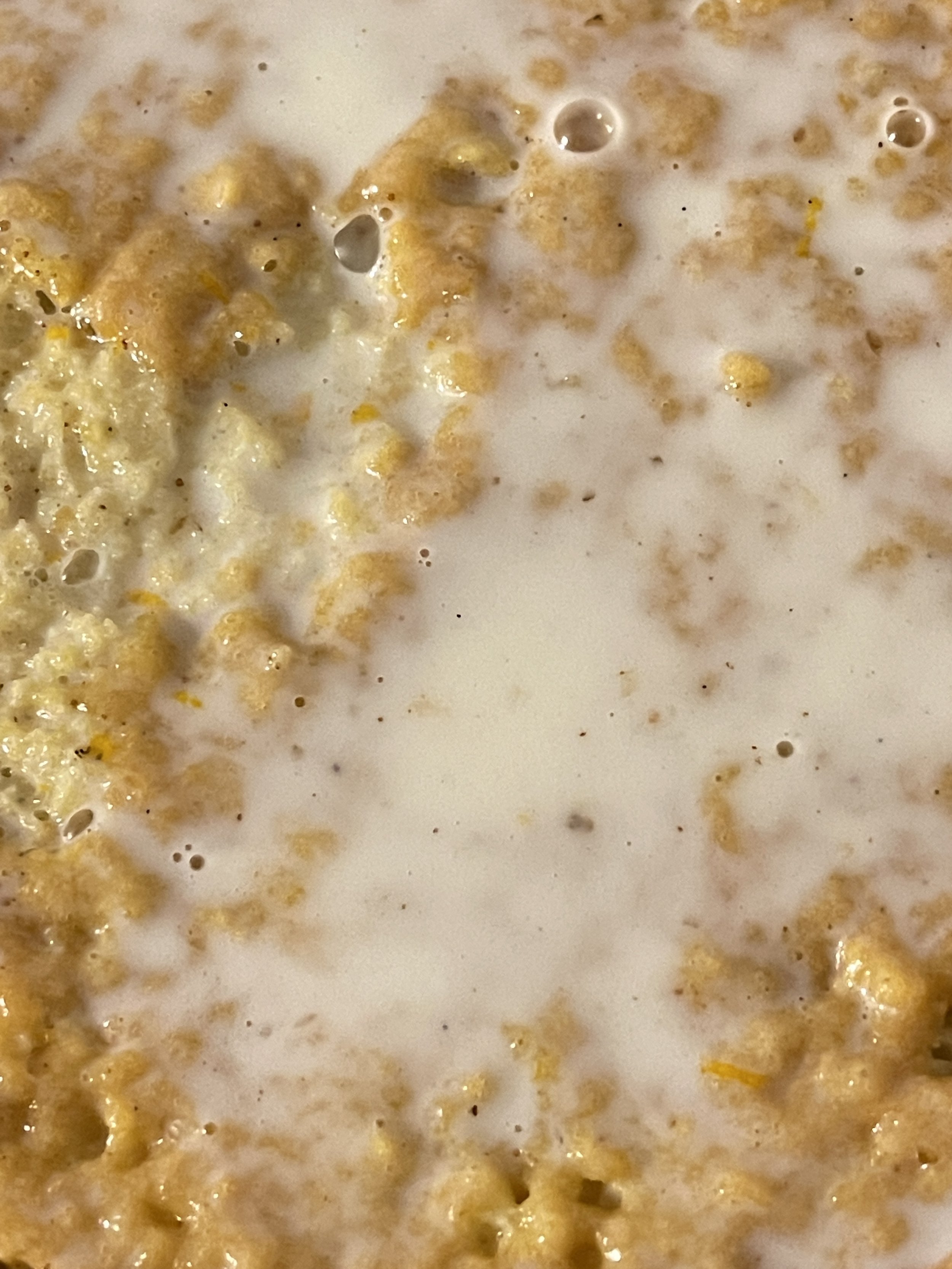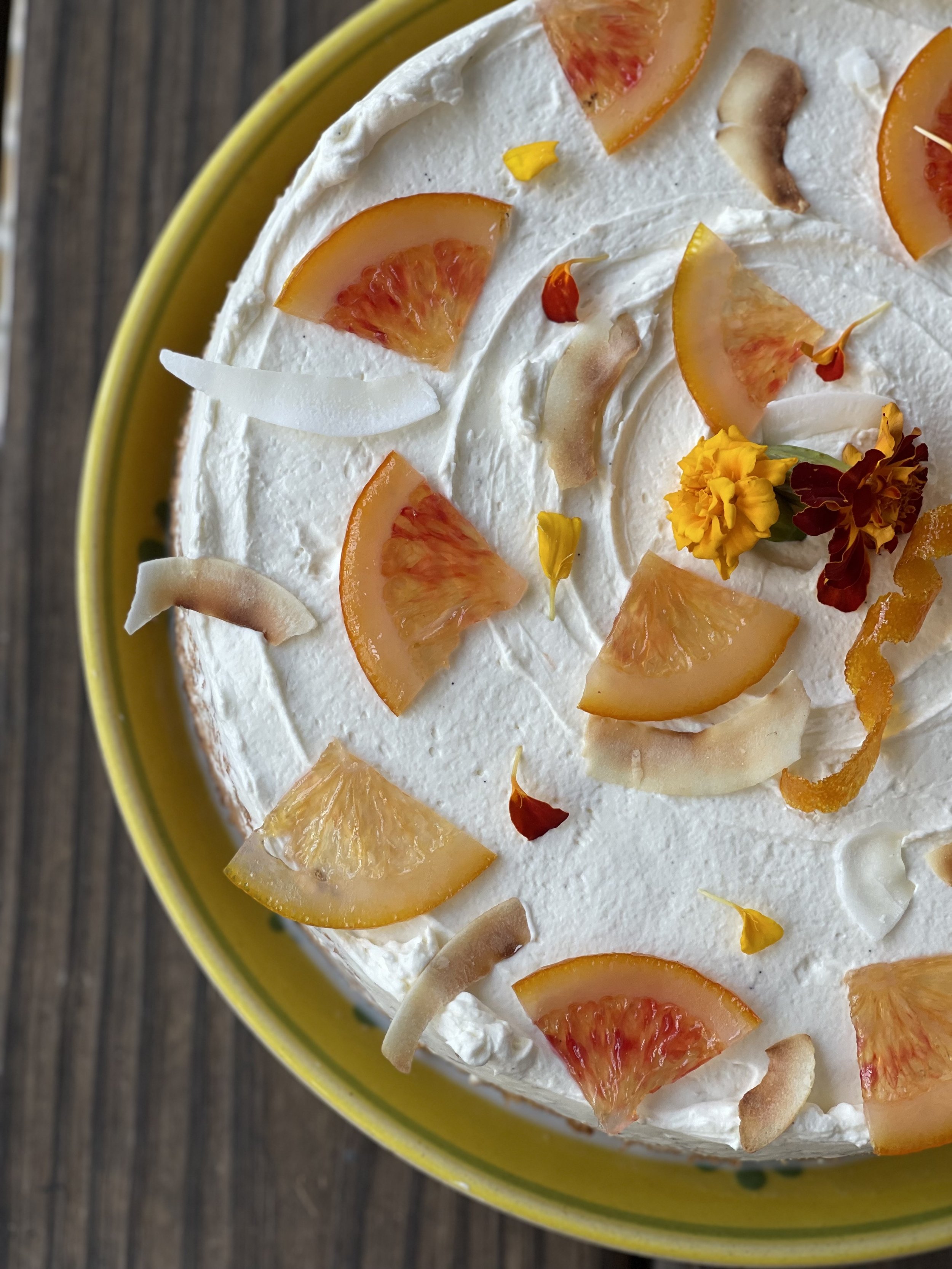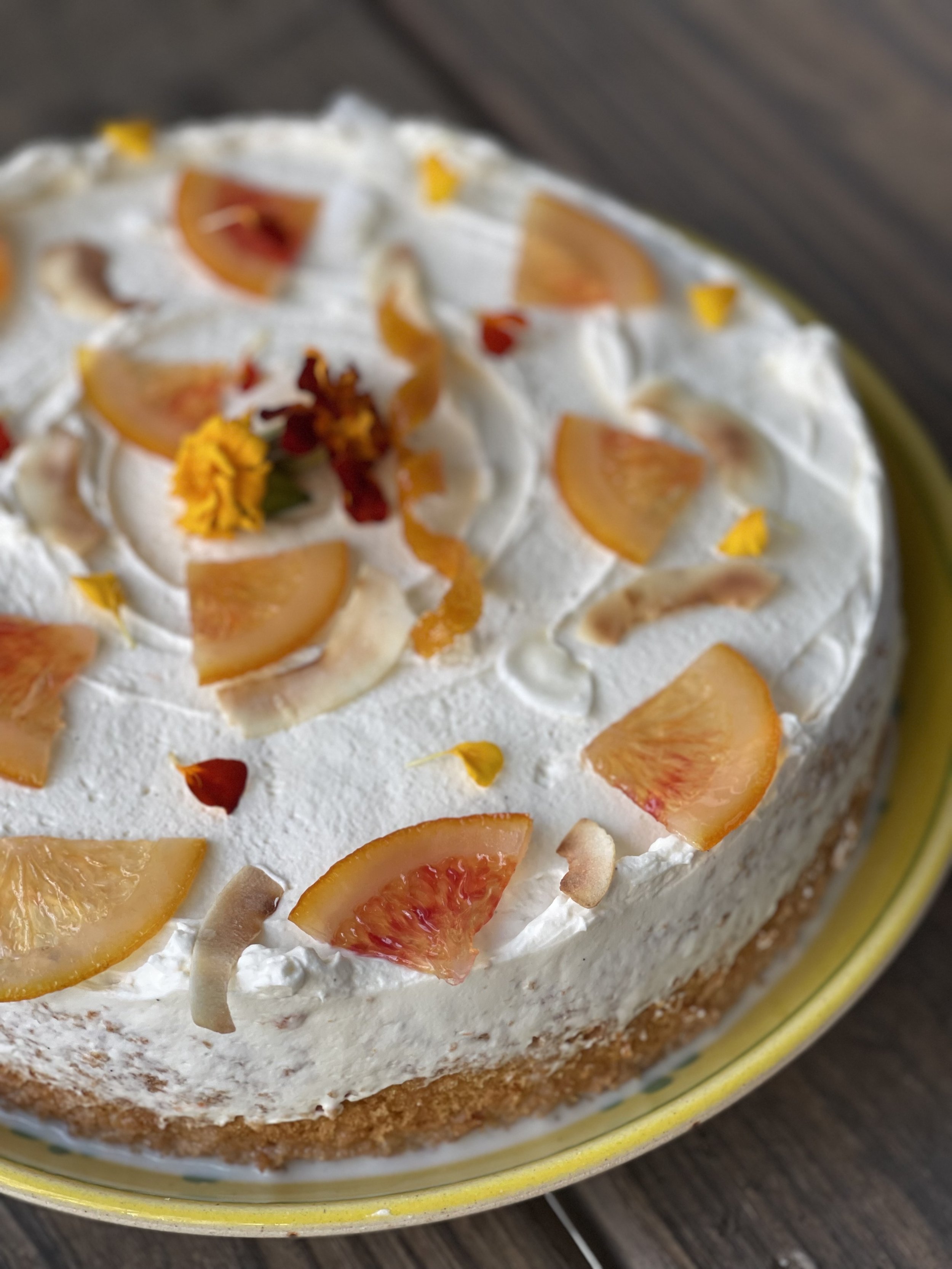at heart panadería tres leches
This recipe was first shared on my Patreon, where I share weekly recipes sometimes behind a paywall and other times not. Going forward all free Patreon recipes will get cross-posted to this blog. If you enjoy what you see and read here, please consider supporting me and my work!
This Wednesday is one year since I posted the first Patreon recipe. In the year since, 41 recipes, a combination of sweet and savory, have been shared, 121 people have subscribed (as of today), and my work life feels like it has found its footing. Putting out one recipe a week was something I was not sure I’d be capable of doing, if I can be frank. It’s a lot of work, if I can continue to be frank. But, I work from the comfort of my tiny kitchen at home and write these kitchen letters to you from either bed or the couch (I don’t have a proper desk yet but when I do? It’s over for everyone), so I have it pretty easy, as far as work goes. I get to work from home doing a job that brings me real fulfillment. I know that I am extremely fortunate and that all of this is possible thanks to the financial help from this Patreon, thanks to the people who subscribe to these weekly recipes. It means the world to me that every week you allow me to show up in your inbox to talk shop.
To celebrate, let’s make some cake. One of the first cake recipes shared last year was a single layer 9-inch blood orange and coconut tres leches and I thought it would be fun to revisit that this week. Whittling down the recipe to just its bare basics, this tres leches cake is a simple sponge cake that gets its lift and rise from nothing but eggs and sugar whipped to ribbon stage. We discussed the ribbon stage briefly back in June with this Niño Envuelto roll cake recipe, but the idea is to whisk whole eggs and sugar until voluminous and tripled in size. Additionally, when the whisk is lifted from the bowl, the mixture should fall back onto itself in ribbons, mounting on its surface for a brief moment before disappearing again.
I used cane sugar here because I got a bag of it recently and have been baking through it. Cane sugar is a 1:1 swap with granulated sugar so don’t fret if you aren’t interested in baking with it. It’s just a less processed sugar that has slightly larger granules than granulated and retains some of the color and flavor from the molasses-like liquid that gets extracted from the sugar cane during the sugar-making process. For this reason my bakes made with cane sugar may look a bit darker than your bakes made with granulated sugar. Cane sugar is more expensive than the granulated sugar we all have in our cupboards or pantries, so I especially don’t expect people to go out and buy a bag.
We then fold in the dry ingredients — nothing more than all-purpose flour and salt because while the sponge should still be delicious on its own, the real party with this recipe starts when we pour the tres leches over the cake. The cake will indeed soak up the trio of coconut milk, sweetened condensed milk and whole milk as if it were an actual sponge. Feel free to swap out the cow’s milk for a plant-based alternative, such as oat milk. I like to reserve a bit of the tres leches soak to spoon over the cake as it’s chilling in the refrigerator before serving, to really ensure the sponge has enough liquid to soak up. A dry tres leches cake is just a sponge cake and that is not the recipe we are making here. A splash (or heavy pour) of rum is optional in the soak.
Frost it all with stabilized whipped cream and decorate your cake however you choose. This is a cake that can be made in stages; make the sponge up to 48 hours before soaking (wrap it with plastic and keep at room temperature), then soak the cake up to 24 hours before serving. It’s best to frost the cake about an hour or so before you plan on wowing your guests and serving. I love how the coconut milk and rum especially play with each other in the soak, imparting the entire bite with their flavor. The creamy, mildly tangy frosting is my favorite way to top the cake, but whipped cream alone would be more than fine.
At Heart Panadería Tres Leches
Yield: 9-inch single layer cake
Sponge Cake
6 large eggs, room temperature
180 grams cane sugar or granulated sugar
175 grams (about 1 ⅓ cup) all-purpose flour
½ teaspoon kosher salt
1 teaspoon ground cinnamon, optional
Tres Leches Soak
13.5 ounces (1 can) coconut milk
14 ounces (1 can) sweetened condensed milk
1 cup full-fat cow’s milk, or alternative
2 tablespoons - ¼ cup rum
Pinch of salt
½ teaspoon ground cinnamon
Whipped Cream Frosting
8 ounces (1 brick) cream cheese, softened
¼ cup confectioners sugar
½ tablespoon vanilla bean paste or extract
Zest and juice from 1 medium blood orange or other winter citrus
8 ounces (1 cup) heavy cream
¼ teaspoon kosher salt
Make the cake:
Heat oven to 350F. Line a 9-inch springform pan or a 9-inch round cake pan with at least 3-inch sides with parchment. Spray the parchment only with cooking spray.
In a stand mixer fitted with the whisk attachment, whip the eggs and sugar on medium speed. Whisk egg and sugar mixture until very light yellow, voluminous (tripled in size), and the mixture falls in ribbons when the whisk attachment is pulled up. This will take between 15-20 minutes, so plan accordingly.
Once eggs are at ribbon stage, sift in the flour in three additions. Gently fold in each addition before adding the salt and folding once more. Be sure to scrape the bottom of the bowl where the flour likes to fall and hang out. Be mindful to not overmix.
Transfer batter to the prepared cake pan and bake for 33-35 minutes. Don’t open the oven door to check for doneness until you can smell the cake, around the 30 min mark. The cake is done when it is warm brown on top and a toothpick inserted into the center of the cake comes out without crumbs.
Transfer to a cooling rack and let cake cool in the pan for about 10 minutes; remove cake from pan and invert onto a cooling rack. Let cake cool completely before attempting to soak.
Make the soak:
Once cake is completely cooled, prick it all over with a toothpick; place cake onto the plate you’ll be serving it on.
In a 2 quart saucepan set over medium heat, add all the ingredients and whisk until combined and bubbles just begin to form around the outer surface of the milks.
Remove from the heat and pour about half of the soak over the cake. It will look like there’s too much liquid, but the cake will drink it all up. Pour about half of the remaining soak over the cake now, then place in your refrigerator for at least 6 hours and up to 24 before frosting and serving.
Reserve the last half of the soak to spoon over the cake every few hours or so while it’s hanging out in the fridge.
Make the whipped cream frosting:
About an hour before you’re planning on serving the cake, make the frosting. In the bowl of a stand mixer fitted with the paddle attachment (or in a mixing bowl if using an electric hand-mixer), add the softened cream cheese; sift in the confectioners sugar. Mix until creamy, then pour in the vanilla and citrus zest and juice and mix once more until combined.
Switch to the whisk attachment now and pour the heavy cream into the bowl. Whisk frosting until very thick and the cream holds medium peaks.
Frost and decorate cake however you please.








